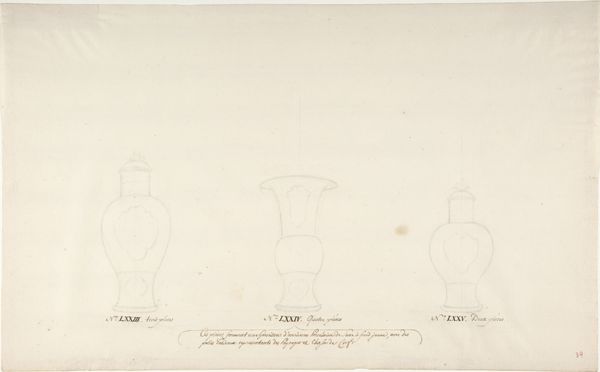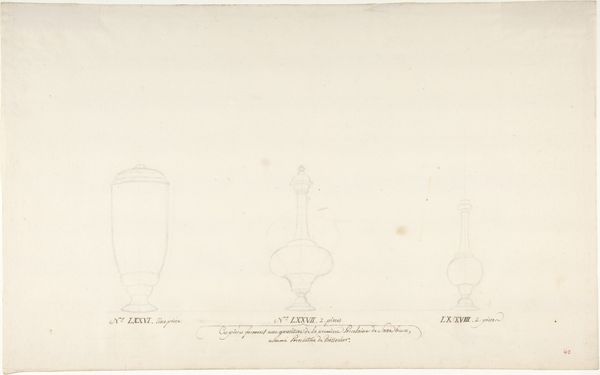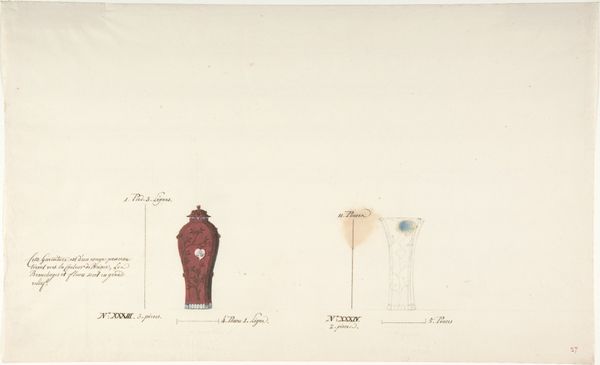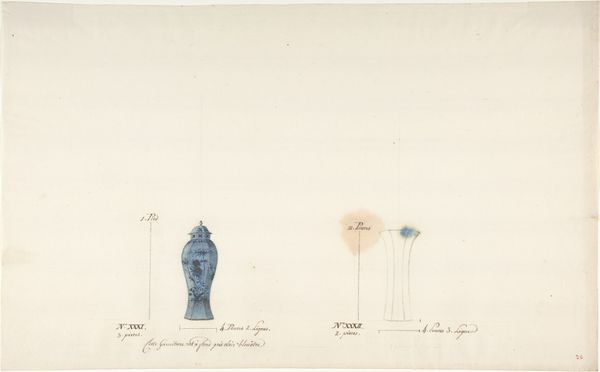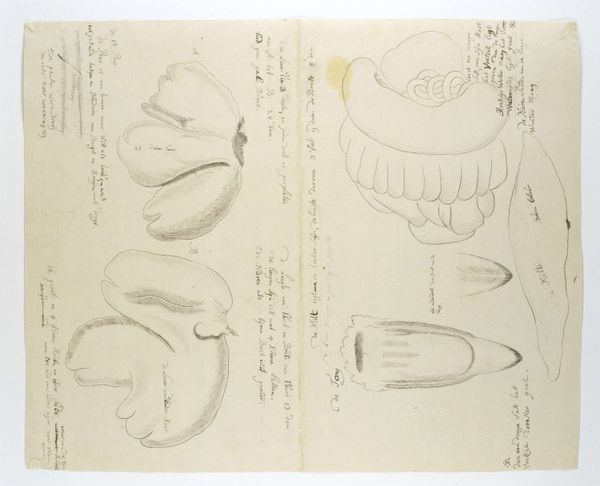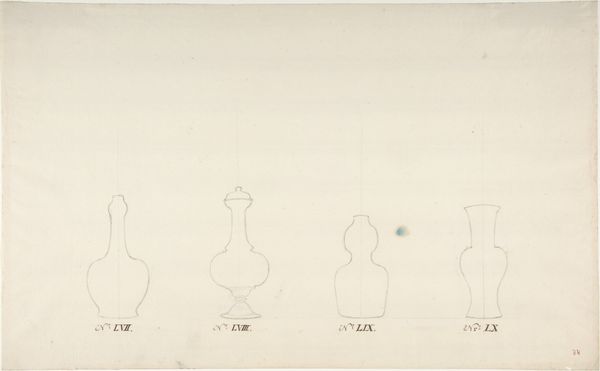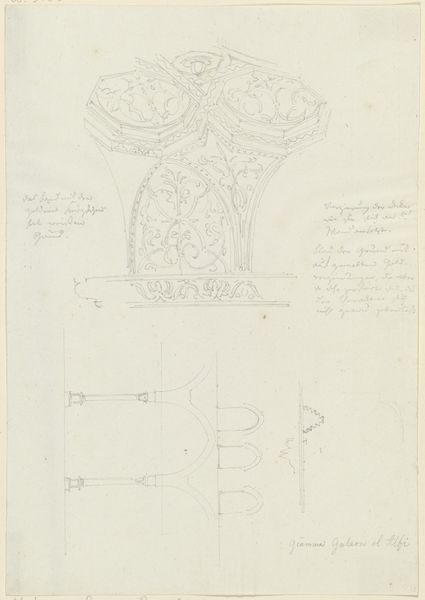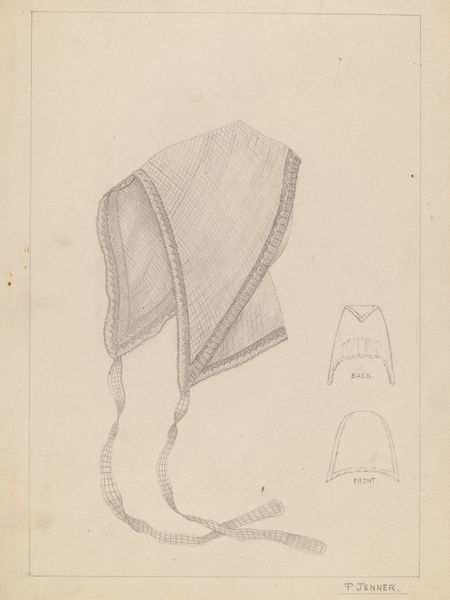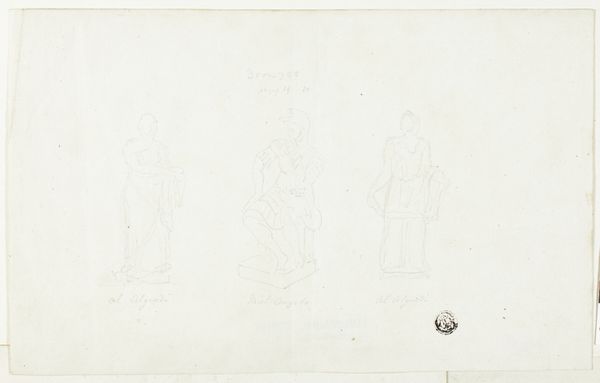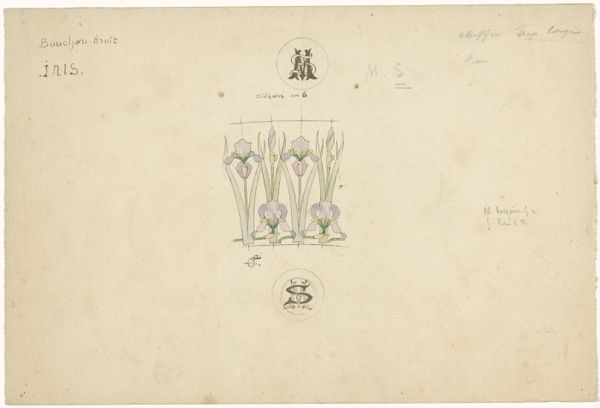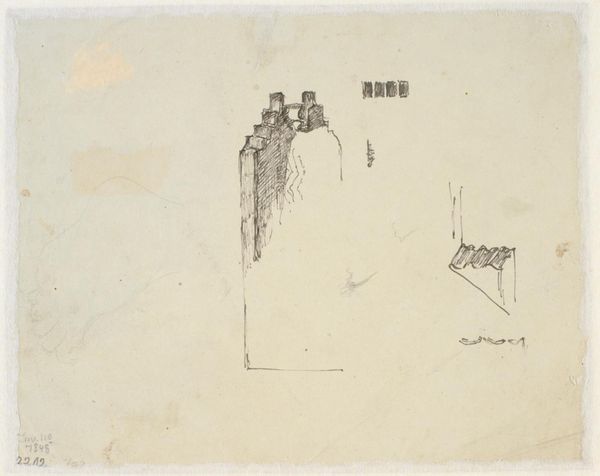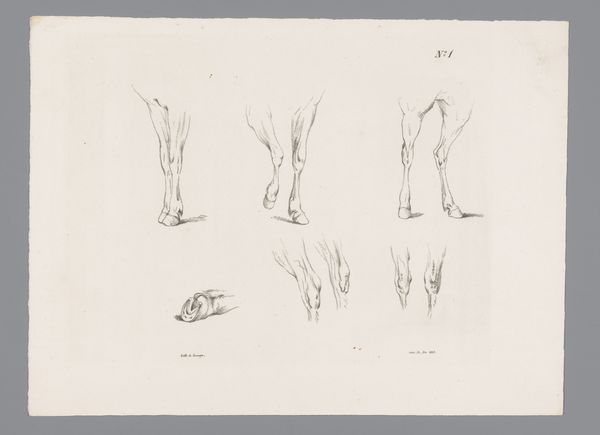
drawing, print, pencil
#
drawing
# print
#
classical-realism
#
geometric
#
pencil
Dimensions: 9 3/16 x 14 7/8 in. (23.4 x 37.8 cm)
Copyright: Public Domain
Curator: Here we have an intriguing sheet entitled "Design for Five Vases," dating from sometime between 1765 and 1790. Though we don't know the artist's name, this drawing, rendered in pencil, offers a glimpse into the Neoclassical aesthetic of the late 18th century. It’s currently held in the collection of the Metropolitan Museum of Art. Editor: It’s quite subtle, isn’t it? Almost ghostly. There’s a sense of restraint and quiet contemplation, a feeling I find oddly soothing in our current times. I mean, given our age of loud statements and maximalist design, this feels like a whispered resistance. Curator: Absolutely. The imagery harkens back to ancient Greek and Roman forms. Consider the emphasis on symmetry, the graceful curves, and the suggestion of classical orders within each vessel's design. These forms weren't simply decorative; they were symbolic, meant to evoke ideas of civic virtue, order, and reason. Editor: Which were powerful political statements, especially as empires like Great Britain and France styled themselves on similar classical models. How subversive, or not, was an anonymous artist engaging with these forms? Was this design for purely aesthetic pleasure, or to imbue everyday objects with political weight? The scale makes them feel so personal. Curator: That tension is precisely where the work finds its strength. On one level, these vase designs represent an embrace of a refined, universal beauty, an aspiration towards an ideal rooted in antiquity. However, as you suggest, we must question whether this reflects an attempt to uphold or to challenge the values of the time. Did classicism truly bring equity and justice, or merely veil a specific class’ desire for power and control? Editor: Right. The vases themselves are empty, a symbol of potential—or a sign that what ought to be inside isn't there. So much rests on interpretation. Does their refined design suggest who may have held power or could afford such items? Were the ancient virtues of 'order' and 'reason' really just about justifying exclusion? The beauty of the vases belies so much inequality in access and who had it, in that age. Curator: Such observations highlight the drawing’s resonance even today. These shapes contain within them a potent mix of enduring aesthetic principles and challenging social and political histories. Thank you, I think seeing these familiar vase designs through the lens of access allows a deeper exploration. Editor: Exactly. Art like this reminds us that our perception is filtered by our values, and helps prompt essential, transformative questioning of the status quo and how the objects around us influence our perspectives.
Comments
No comments
Be the first to comment and join the conversation on the ultimate creative platform.
